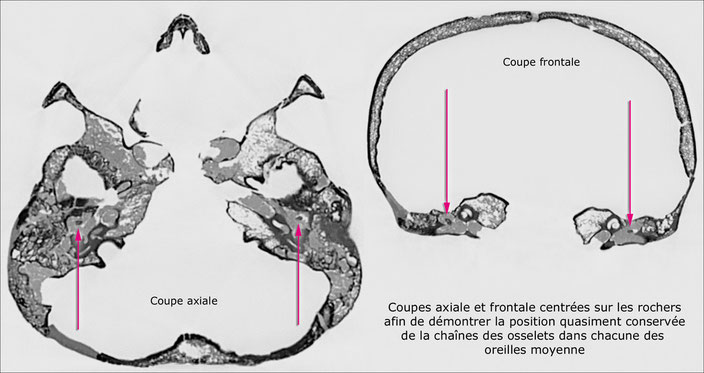Aztec skull

Video CT scan : 3D opaque VRT view with a frontal clipping plane
The scan study of this extremely rare Aztec human skull decorated with turquoise tesserae shows that it was buried soon after death, because the ears bones were still in place when the soil filled the natural cavities of the skull. It also reveals damage to the bone, some mended by the restorer. Age at death can be determined by close observation of the teeth.

Video CT scan : 3D opaque VRT view
Video CT scan : 3D opaque VRT view with a frontal clipping plane
Video CT scan : 3D half opaque VRT view extracted from dual-energy scanning (80 & 140 kV)
Video CT scan : 2D MPR coronal slices


